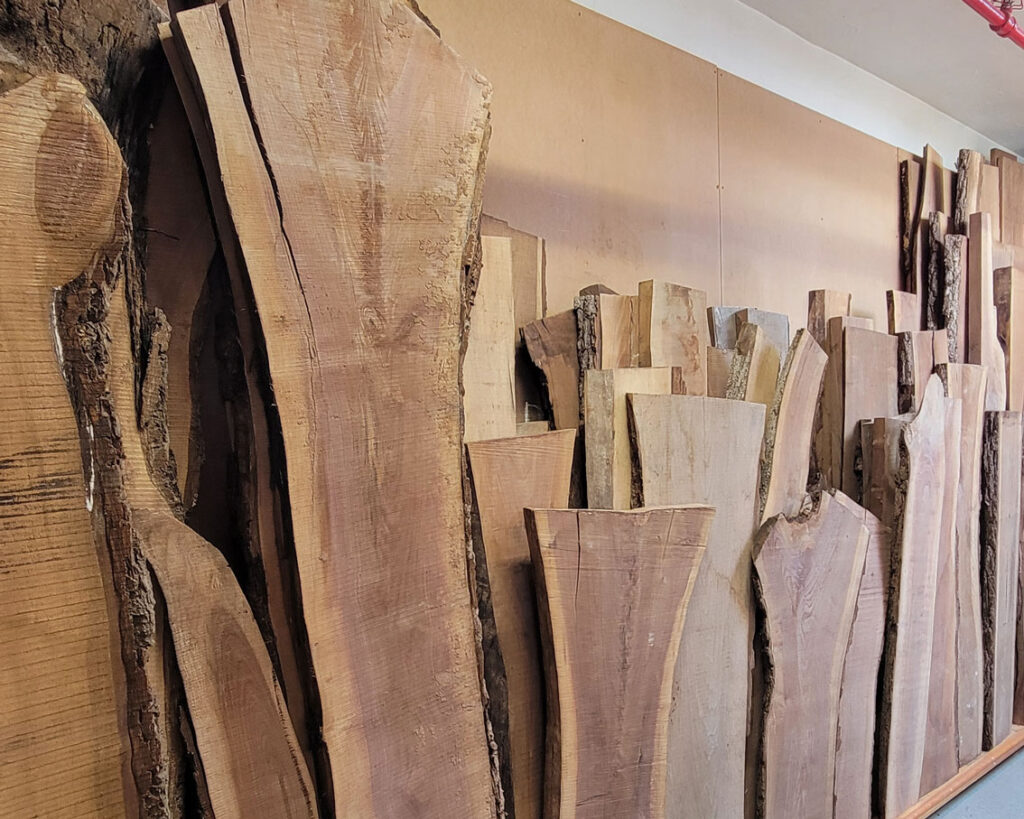Need Walnut? We’ve Got It!

Ever since I started in construction in the mid 1960’s, there have been many trends in the use of various woods for interior finish. When I was converting a Back Bay townhouse into condos in 1973, all the existing doors and trim had long been painted white. Some of it was poplar, which was meant to be painted, so I assumed that all the woodwork was poplar. An employee asked me if I had ever checked to see if there were other hardwoods used, and I had not. Just for the hell of it, I scraped off a small area on an 8′ door, and found it was walnut—with ten coats of paint. Then I tested an elaborate fireplace mantel—also walnut. I put a guy to work stripping all this, and refinished everything with clear spar varnish. The newly liberated walnut looked great. All I could think of was, “What idiots would paint over this beautiful wood?”
Well, sometime in the mid 1900’s, dark woods went out of fashion, and people couldn’t wait to “freshen up” their decor with white paint. Of course, most of those redecorations involved the use of that oh-so-very desirable lead paint, which remained to torment developers for decades to come. It actually spawned a whole new enterprise, the de-leading industry. As a child, I was never into chewing on the woodwork in our Dorchester three decker, but I guess some others were, with disastrous results.
Even when I bought Barney & Carey in 1978, walnut was not popular, and relatively cheap. People used pine for just about all trim, inside and out, and there was not a big market for hardwoods. Oak, both white and red, was mostly used for flooring, and for furniture, along with cherry and maple. Then it all began to turn around. Hardwoods became in vogue once again, and were used by an ever growing number of small, custom furniture shops in Boston and Cambridge. By the time Barney & Carey moved to Quincy in 1988, a much larger percentage of our lumber sales was in hardwoods.
At that time, our customers wanted their walnut and other hardwoods CLEAR. I joked that despite the complicated grading rules, there were really only two grades- clear, and not clear. Woodworkers would reject a board that had a tiny knot in it. The trees just insisted on having those damned knot producing branches! Again, all that changed, as buyers, myself included, discovered the beauty of natural flaws and blemishes. A customer brought in a pickup load of really rough cherry—cracks, cracks, holes, and splits—‚for use to mill. He was using it for living room flooring.
We thought he was nuts; but it turned out to be one of the nicest floors I had seen, thanks to a few gallons of epoxy!
So, now we have it all. Clear, knotty, live edge, holes, square edge, long, short, thick and thin. I’ve been on a constant buying spree for walnut, and our inventory includes what you want. The same goes for many other hardwoods and exotics, as well. We have expanded our warehouse to better display everything. Please come and take a look—you will be impressed!
